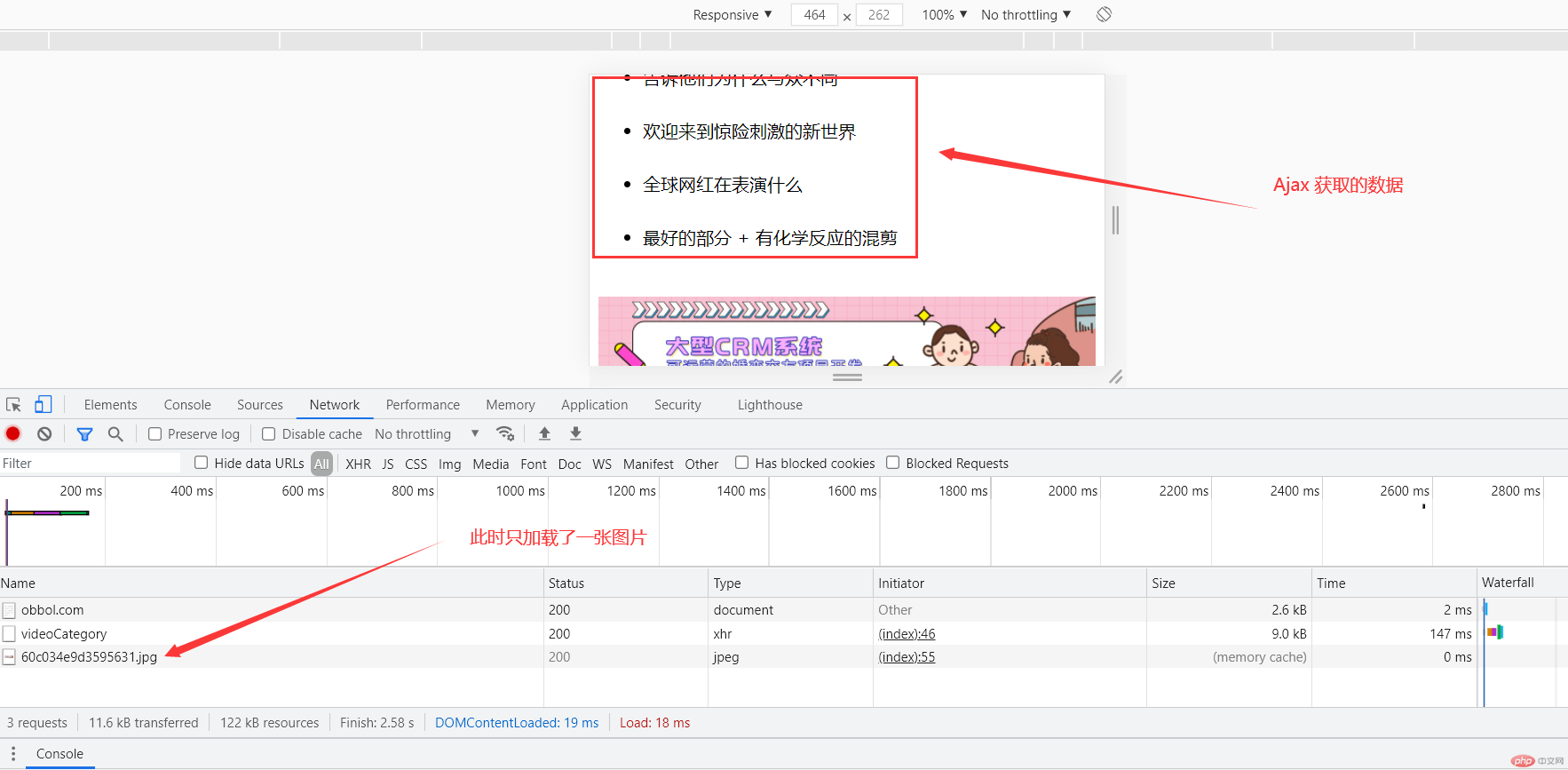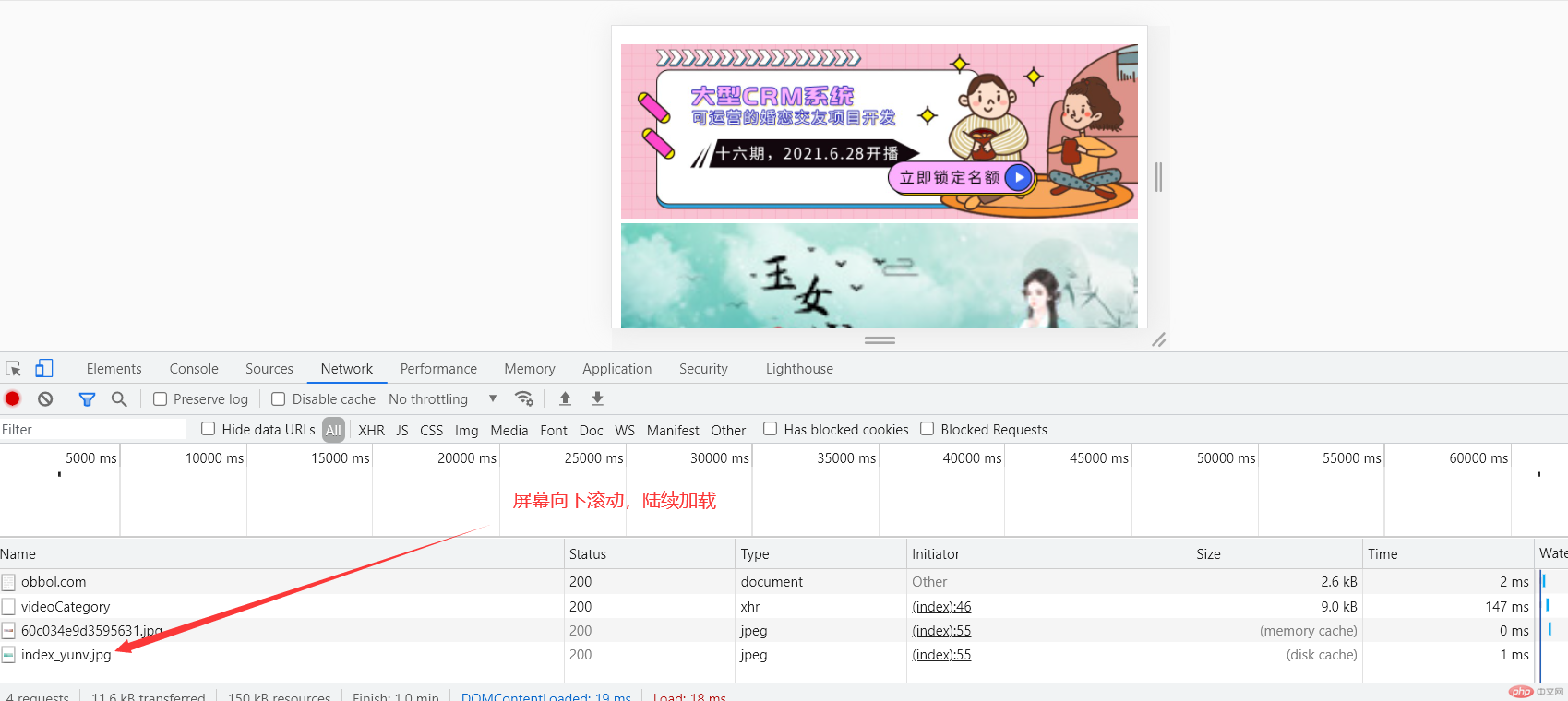Ajax请求实例,与懒加载技术


<!DOCTYPE html><html lang="en"><head> <meta charset="UTF-8"> <meta http-equiv="X-UA-Compatible" content="IE=edge"> <meta name="viewport" content="width=device-width, initial-scale=1.0"> <title>Document</title></head><body> <ul> </ul> <img width="100%" data-src="https://img.php.cn/upload/article/000/000/003/60c034e9d3595631.jpg" alt="" /> <img width="100%" data-src="https://www.php.cn/static/images/index_yunv.jpg" alt="" /> <img width="100%" data-src="https://img.php.cn/upload/course/000/000/015/60eeb1f094ce0888.png" alt="" /> <img width="100%" data-src="https://img.php.cn/upload/course/000/000/010/60bf1859d6f23449.jpg" alt="" /> <img width="100%" data-src="https://img.php.cn/upload/course/000/000/001/5d1c6dfc9eb09885.jpg" alt="" /> <script>// ### 2.1 xhr 请求步骤// 1. 创建 xhr 对象: `const xhr = new XMLHttpRequest()`// 2. 配置 xhr 参数: `xhr.open(type, url)`// 3. 处理 xhr 响应: `xhr.onload = (...) => {...}`// 4. 发送 xhr 请求: `xhr.send(...)`// 问:Ajax get,post请求的区别// 答:get请求参数会出现在地址栏,一般用户读取数据// 答:post请求的参数会隐藏在请求头中,地址栏不会发生任何变化,相对较安全,一般用于提交数据getData();function getData(){ const xhr = new XMLHttpRequest(); let url = "https://api.apiopen.top/videoCategory"; xhr.open('GET',url); xhr.responseType = 'json'; xhr.onload = function (e){ // console.log(e.currentTarget.response.result.itemList); const ul = document.querySelector('ul'); for(let i = 0;i<e.currentTarget.response.result.itemList.length;i++){ const li = document.createElement('li'); li.textContent = e.currentTarget.response.result.itemList[i].data.description; li.style.height = '3rem'; ul.append(li); } } xhr.onerror = function (){console.log('请求错误!')}; xhr.send(null);}//onscroll 实现懒加载 let img = document.images; window.onscroll = function(){ [...img].forEach(img =>{ if(img.getBoundingClientRect().top < window.innerHeight){ img.src = img.dataset.src; } }) }</script></body></html>



